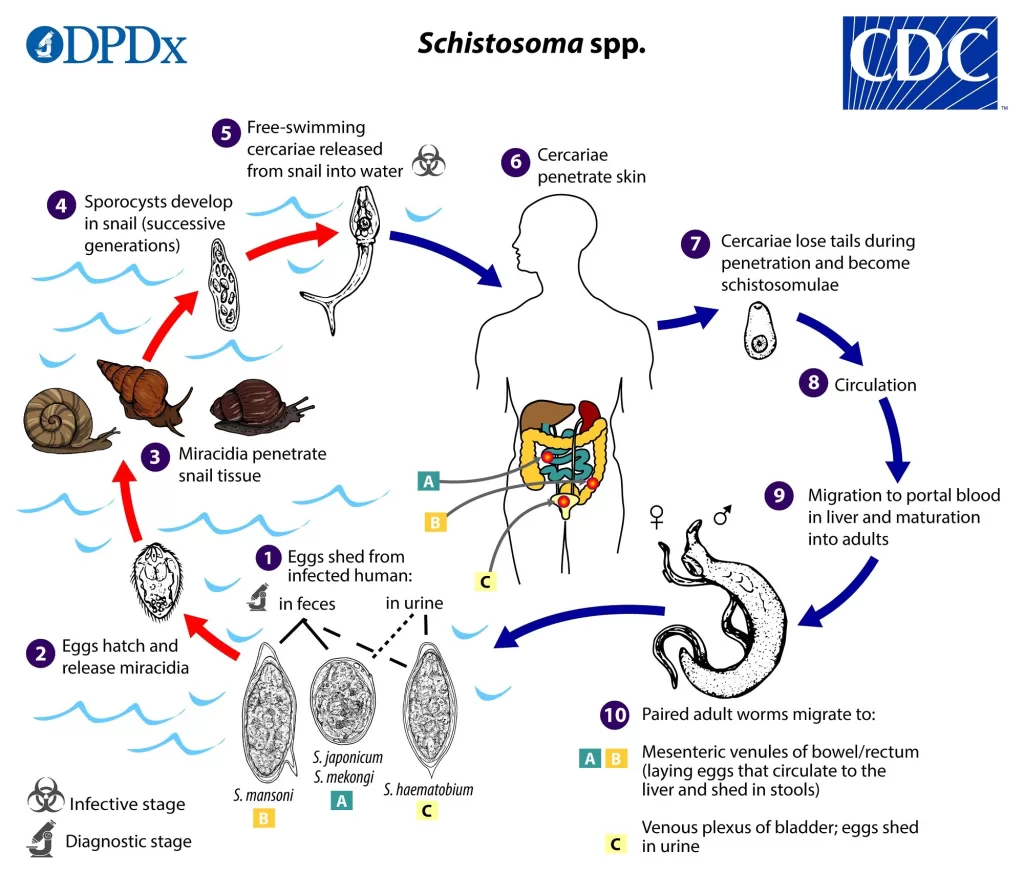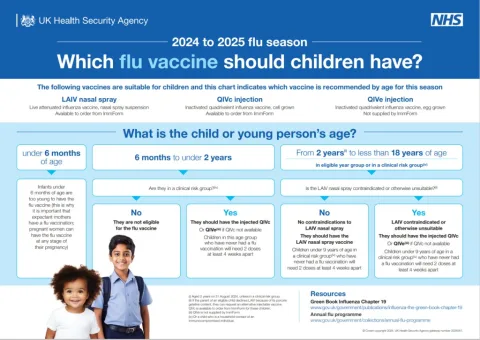Schistosomiasis, an emerging waterborne parasitic disease, poses a significant threat in sub-Saharan Africa, particularly in Malawi, where cases of hybrid schistosomes are on the rise. This condition is caused by various species of the *Schistosoma* parasite, with notable occurrences of zoonotic schistosomiasis complicating traditional diagnostics. Such hybrid schistosomes, resulting from interbreeding among species like *S. haematobium* and *S. mansoni*, are leading to increasing genetic diversity, as seen in unexpected patterns of egg excretion. Cases of intestinal schistosomiasis are intertwined with these hybrid infections, highlighting the complexities of controlling the disease. With the detection of *Schistosoma dual infections*, the need for enhanced surveillance and novel diagnostic methods has never been more critical to tackle this pressing public health issue.
The term schistosomiasis refers to a group of diseases caused by parasitic worms known as Schistosoma, which primarily infect humans through freshwater contact with infected snails. This illness manifests in several forms, including urogenital and intestinal schistosomiasis, characterized by distinct symptoms and complications. In regions like Malawi, hybrid schistosomes from zoonotic sources are frequently detected, leading to concerning patterns of disease transmission. The evolution of these hybrid forms presents challenges for current treatment and prevention strategies, necessitating a deeper understanding of schistosome biology and ecology. As we delve into the subject, the interplay of these various schistosome species underscores the urgent need for comprehensive research efforts.
Understanding Schistosomiasis: A Zoonotic Perspective
Schistosomiasis, a debilitating parasitic disease, primarily affects individuals in tropical and subtropical regions, especially sub-Saharan Africa. Caused by *Schistosoma* species, such as *S. haematobium* and *S. mansoni*, it is transmitted through freshwater snails, making water sources crucial for its lifecycle. The disease manifests in various forms, including urogenital and intestinal schistosomiasis, each associated with distinct *Schistosoma* variants, complicating diagnosis and treatment. Understanding zoonotic schistosomiasis is vital, as it encompasses cases where animals could act as reservoirs for *Schistosoma* infections, leading to increased transmission to humans.
Recent research has highlighted cases of hybrid schistosomes, such as *S. haematobium × S. mattheei*, that blur the lines between traditional classifications. These findings suggest evolving genetic diversity among schistosome populations, potentially leading to altered pathogenicity and varied clinical presentations. In regions like Malawi, tracking these zoonotic infections is imperative, not only for public health responses but also for establishing accurate prevalence rates and identifying at-risk communities. Improved molecular techniques and fecal sampling are essential tools for unraveling the complexities of schistosomiasis, enhancing our abilities to control its spread.
The Rise of Hybrid Schistosomes in Malawi
The phenomenon of hybrid schistosomes presents a novel challenge in regions like Malawi, where recent outbreaks of intestinal schistosomiasis have been reported. Studies conducted in Mangochi District found that hybridization between *S. haematobium* and *S. mattheei* has led to unexpected egg excretion patterns in human populations. This highlights the role that environmental factors and regional biodiversity play in the transmission dynamics of schistosomiasis. The hybrid schistosomes not only complicate diagnostic efforts but also raise concerns regarding treatment regimens that may not be effective against these emerging strains.
Hybrid schistosomes may exhibit unique characteristics that influence their epidemiology, potentially affecting how public health officials manage schistosomiasis in the region. This is particularly relevant in Malawi, where *S. mansoni* infections have been historically prevalent. The discovery of mixed infections necessitates a reassessment of public health strategies, including targeted surveillance and enhanced diagnostic capabilities to address this evolving landscape of schistosomiasis. Moreover, recognizing the presence of zoonotic schistosome variants raises questions about animal-human interactions and the need for integrated control measures.
Prevalence of Intestinal Schistosomiasis in Sub-Saharan Africa and Malawi
Intestinal schistosomiasis poses a significant health crisis in sub-Saharan Africa, where thousands of cases remain undetected each year. Malawi, in particular, has reported a growing prevalence of *S. mansoni*, especially in rural and peri-urban communities. Recent studies using point-of-care tests have shown a notable prevalence rate, signaling an urgent need for more efficient surveillance systems. As public health infrastructure improves, understanding what contributes to the varying levels of infection becomes vital in deploying effective interventions.
The interplay between environmental conditions, sanitation access, and human behavior significantly influences the transmission of intestinal schistosomiasis. In Malawi, activities such as agriculture and fishing in contaminated water bodies exacerbate the risk of infection. To combat the escalating issue of intestinal schistosomiasis, health interventions must focus on holistic community education and targeted control measures that not only address human infections but also incorporate environmental management to reduce snail populations. Additionally, establishing efficient monitoring systems through regular community health assessments will be vital in providing timely data for effective public health responses.
Molecular Insights into Schistosomiasis Diagnostics
Advancements in molecular diagnostics have paved the way for a more accurate understanding of schistosomiasis species diversity and prevalence. The use of high-resolution melt real-time PCR techniques allows for the precise identification of individual *Schistosoma* species and their hybrids in human samples. This molecular approach has led to discoveries of hybrid schistosomes in Malawi, revealing complex patterns of infection that traditional diagnostic methods often overlook.
The ability to differentiate between species using molecular techniques not only enhances diagnostic accuracy but also informs treatment choices. For instance, in cases with evidence of *Schistosoma dual infections*, understanding the specific species involved can guide appropriate therapeutic strategies. With the heightened risk of zoonotic schistosomiasis in mixed-human-animal environments, continued investment in these advanced diagnostic tools is essential to control future outbreaks and address growing rates of infection in endemic areas.
Challenges in Schistosomiasis Surveillance in Rural Malawi
Surveillance of schistosomiasis in rural areas of Malawi faces significant challenges due to a lack of infrastructure, trained personnel, and access to advanced diagnostic technologies. Many communities have poor sanitary facilities and limited access to clean water, which promote the life cycle of *Schistosoma*. Efforts to monitor the disease often become complicated by the geographical diversity and varying levels of infection, necessitating tailored approaches to surveillance and control.
While community engagement is essential to improve health literacy about schistosomiasis, addressing the logistical hurdles of conducting thorough epidemiological studies remains critical. Innovative methods, such as mobile health technologies, could enhance data collection and facilitate real-time monitoring of schistosomiasis prevalence in remote areas. By empowering local health officials and incorporating community knowledge, Malawi could develop more effective surveillance systems capable of adapting to the evolving epidemiology of schistosomiasis.
The Role of Environmental Factors in Schistosomiasis Transmission
Environmental factors significantly influence the transmission dynamics of schistosomiasis, particularly in regions like Malawi, where water bodies are crucial for agricultural and recreational activities. Seasonal changes can affect snail populations, which serve as the intermediate hosts for the parasitic *Schistosoma* species. Increased flooding, for instance, can lead to heightened snail reproduction, facilitating a greater risk of human infection as more people come into contact with contaminated water.
Additionally, land use patterns play a pivotal role in disease transmission. Deforestation and land clearing for agriculture alter the ecology of freshwater systems, potentially increasing the habitats suitable for snails. Understanding these environmental interactions is vital for designing effective preventative measures against schistosomiasis. Integrating ecological studies with public health strategies will help to mitigate the influence of these environmental factors, leading to more robust interventions against the disease.
Preventive Measures Against Schistosomiasis in Malawi
Preventive measures against schistosomiasis in Malawi must encompass both medical and non-medical strategies to effectively reduce the incidence of infection. Mass drug administration (MDA) programs aiming to treat and prevent schistosomiasis among at-risk populations are crucial. However, to sustain these efforts, communities need education on hygiene practices and the dangers of exposure to contaminated water sources. Increasing awareness about the lifecycle of schistosomes can empower local populations to engage in preventative measures, such as avoiding swimming in known infested waters.
Moreover, addressing environmental factors that contribute to the proliferation of freshwater snails is equally important. Implementing eco-friendly landscaping practices around water bodies and improving drainage in agricultural areas could help reduce snail habitats. Health promotion initiatives that engage with communities, local leaders, and environmentalists can foster a multifaceted approach towards managing and preventing schistosomiasis. This comprehensive strategy ensures the sustainability of interventions and ultimately lessens the disease burden across Malawi.
Innovations in Schistosomiasis Treatment and Control
Innovative approaches in schistosomiasis treatment and control are essential to cope with the evolving nature of schistosome species and their hybrid forms. Recent advances in drug discovery are leading to the exploration of new pharmacological agents, as traditional treatments may not always effectively target hybrid schistosomes. Research into combination therapies or medications that enhance the immunological response could significantly improve treatment outcomes, particularly in endemic regions such as Malawi.
Moreover, community-based participatory research is gaining ground as a way to involve local populations in the development and implementation of control strategies against schistosomiasis. By understanding community perspectives and incorporating local knowledge into interventions, health programs can achieve greater acceptance and adherence. Innovative public health campaigns that leverage technology and social media to spread awareness about schistosomiasis prevention measures can also enhance community engagement. As hybrid schistosomes continue to emerge, adapting treatment and control measures to these changing dynamics will be essential for reducing the burden of schistosomiasis.
Future Directions in Schistosomiasis Research
Future research directions in schistosomiasis must prioritize understanding the complexities of hybrid schistosomes and their epidemiological implications. Investigating the ecological, genetic, and molecular dynamics of schistosome populations will be key in predicting outbreaks and developing adaptive control methods. It is important to focus not only on human health aspects but also on the ecological determinants influencing schistosomiasis transmission, including climate change and human-animal interactions.
Moreover, fostering collaborative research initiatives that connect environmental scientists, epidemiologists, and public health experts will enhance the effectiveness of interventions. Emphasizing interdisciplinary research will help create optimized strategies tailored for specific communities at risk. As new technologies emerge, integrating advanced molecular techniques for real-time surveillance and mapping of schistosomiasis distribution will enable more timely responses to potential epidemics, contributing to global health security.
Frequently Asked Questions
What is schistosomiasis and how is it transmitted?
Schistosomiasis is a waterborne, parasitic disease caused by several species of the *Schistosoma* genus, including *S. haematobium* and *S. mansoni*. It is primarily transmitted through contaminated freshwater environments where specific snails from the *Bulinus* and *Biomphalaria* genera act as intermediate hosts.
What are the common symptoms of intestinal schistosomiasis?
Intestinal schistosomiasis, caused mainly by *Schistosoma mansoni*, can lead to symptoms such as abdominal pain, diarrhea, and blood in the stool. Chronic cases may result in severe liver and intestinal damage.
How does Malawi schistosomiasis differ from other regions?
Malawi schistosomiasis is characterized by a high prevalence of *Schistosoma haematobium*, which causes urogenital schistosomiasis, and an increasing detection of hybrid schistosomes. Zoonotic schistosomiasis is emerging due to hybridization events between *S. haematobium* and other species, highlighting the complexity of disease management in this region.
What are hybrid schistosomes and why are they significant?
Hybrid schistosomes, such as those formed from *Schistosoma haematobium* and *S. mattheei*, represent a genetic blend of different species. Their significance lies in the potential for altered pathogenicity and transmission dynamics, complicating treatment and surveillance efforts for schistosomiasis.
How can zoonotic schistosomiasis affect human health?
Zoonotic schistosomiasis, caused by hybrids or species such as *Schistosoma mattheei*, can lead to complex infection scenarios in humans, resulting in both urogenital and intestinal symptoms. It poses challenges for public health due to the need for enhanced surveillance and diagnostic methods.
What are the implications of Schistosoma dual infections?
Schistosoma dual infections, where individuals are infected with more than one schistosome species, can complicate symptoms and treatment. In regions like Malawi, where both *S. mansoni* and *S. haematobium* are prevalent, it can lead to underreporting and misdiagnosis of schistosomiasis cases.
What advances are being made in the diagnosis of schistosomiasis in Malawi?
Recent studies in Malawi are focusing on improving detection techniques for schistosomiasis, particularly through molecular analysis and point-of-care testing. These advancements aim to address the complex patterns of egg excretion associated with hybrid and zoonotic schistosomes.
Why is fecal sampling important for monitoring schistosomiasis?
Fecal sampling is crucial for monitoring intestinal schistosomiasis as it helps detect schistosome species that may not be identified through urine samples, especially in cases of hybridization where complex egg morphology is present, as seen with *S. haematobium* × *S. mattheei* hybrids.
What are the recommended strategies for controlling schistosomiasis in endemic areas?
Control strategies for schistosomiasis in endemic areas like Malawi include improving water management, increasing access to sanitation, promoting health education, and implementing regular mass drug administration to reduce infections of both *S. haematobium* and hybrid schistosomes.
| Key Point | Details |
|---|---|
| Mixed Schistosomiasis Cases | Documented cases of hybrid schistosomiasis involving *S. mattheei*, *S. haematobium*, and *S. mansoni* were found in Malawi. |
| Prevalence Data | In Mangochi District, *S. mansoni* prevalence recorded was 14.8%, the lowest since 2017. |
| Unexpected Findings | Identified unexpected morphological diversity in schistosome ova, indicating possible underreporting of intestinal schistosomiasis. |
| Hybridization Evidence | Molecular analysis shows hybridization events among schistosome species with a higher prevalence of zoonotic species. |
| Conclusion on Diagnostic Gaps | Fecal sampling and molecular testing are crucial for effective surveillance of schistosomiasis in Malawi. |
Summary
Schistosomiasis is a significant public health concern in regions like Malawi, as highlighted by emerging studies revealing mixed infections and hybridizations among schistosome species. The discovery of complex egg excretion patterns underscores the need for enhanced diagnostic methods to accurately monitor and address schistosomiasis prevalence, particularly as new zoonotic strains emerge. Continuous research and effective surveillance strategies will be vital in combatting this waterborne disease.
The content provided on this blog (e.g., symptom descriptions, health tips, or general advice) is for informational purposes only and is not a substitute for professional medical advice, diagnosis, or treatment. Always seek the guidance of your physician or other qualified healthcare provider with any questions you may have regarding a medical condition. Never disregard professional medical advice or delay seeking it because of something you have read on this website. If you believe you may have a medical emergency, call your doctor or emergency services immediately. Reliance on any information provided by this blog is solely at your own risk.








